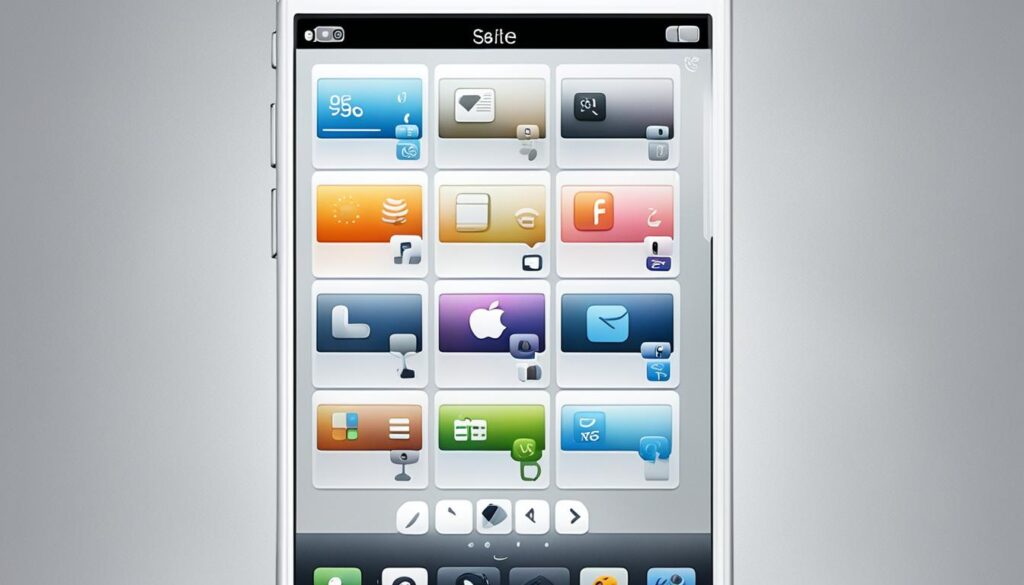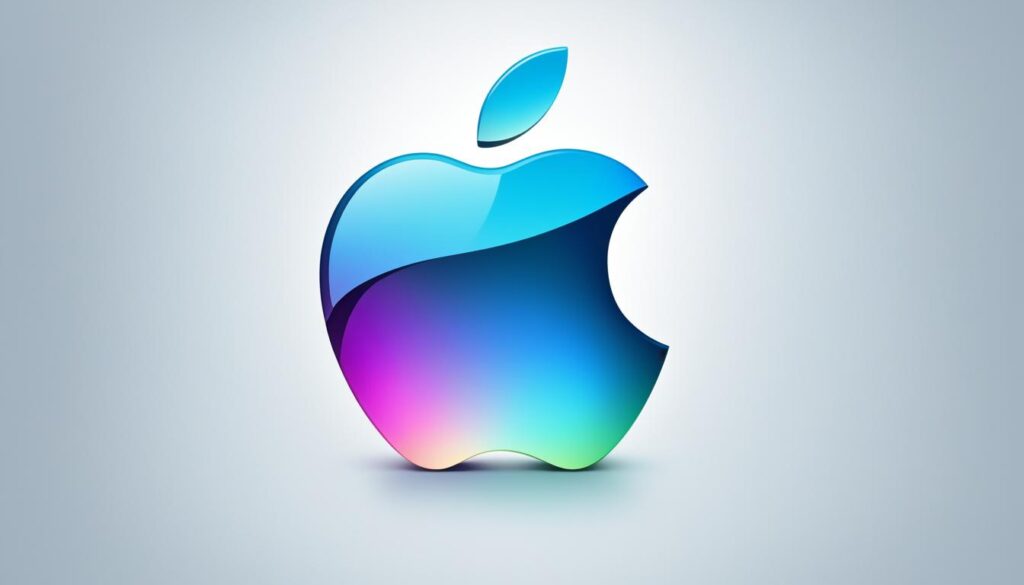Exploring The Complete History of iOS Evolution
Monday, 5/6/2024, 8 minutes to read

The march of technology waits for no one, and Apple’s iOS is a testament to that relentless pace. Tracing the iOS development timeline is akin to unfolding the chapters of a digital revolution that transformed our palms into gateways of limitless interaction. This chronicle is not just about software updates; it’s a saga of how the iPhone operating system history has mirrored our evolving digital lifestyle. As we navigate through the annals of iOS software updates, we witness a fascinating metamorphosis: a journey from a simple user interface to the sophisticated Apple mobile OS evolution we experience today.
Key Takeaways
- A comprehensive overview of the iOS development timeline illustrates Apple’s dedicated path of innovation.
- Unlocking the chapters of iPhone operating system history provides valuable insights into the evolution of mobile technology.
- A deep dive into iOS software updates reveals the role of user experience in shaping Apple’s mobile OS evolution.
- Key milestones within the iOS timeline showcase Apple’s commitment to security, functionality, and design sophistication.
- The dynamic progression of iOS underscores the importance of software in enhancing connectivity and productivity.
The Origins and Early Innovations of iOS
When the iPhone was introduced in 2007, it was not just a new device; it heralded a new era of smartphone technology. With its iPhone OS original features, it captured imaginations and redefined expectations. Central to its appeal was the Multi-Touch interface, an innovative input method that allowed users to interact with their device using multiple fingers simultaneously—intuitive and straightforward.

The Birth of iOS: iPhone OS 1.0
In 2007, the unveiling of the iPhone marked a significant moment in mobile technology. The iPhone OS shattered convention by removing the physical keyboard, instead opting for a sleek, touch-screen Multi-Touch interface. This pioneering step in iOS software development allowed users to tap, swipe, and pinch their way through their phone—a novel concept at the time. The original iPhone OS packed a suite of core apps designed specifically for the iPhone, setting a high bar for usability and integration.
iOS Advancements: The Introduction of App Store
A major leap in iOS updates history came with the introduction of the App Store in 2008. This launch turned the iPhone into a platform for third-party apps, granting developers the tools to create a plethora of applications—from games to productivity tools, thereby initiating a seismic shift in the iOS software development landscape. The App Store launch became a cornerstone of Apple’s strategy, transforming every iPhone into a more personalized and powerful device. This platform extended the capabilities of iPhone OS further than anyone could have initially imagined.
System Updates: A Look at iOS 2 and 3
As the iPhone’s popularity soared, so did the need for advanced functionalities. iOS 2 and 3 brought with them highly anticipated improvements that addressed the desires of a rapidly growing user base. Among these updates were the pioneering Push Notifications, alerting users to real-time updates from their apps even when not actively in use. 2009 saw the introduction of the iOS Copy and Paste feature, an essential tool that users had been clamoring for since the iPhone’s inception. These enhancements were more than incremental updates; they were affirmations of Apple’s commitment to refining and empowering the user experience with meaningful features.
The journey from the original iPhone OS to the iterative releases which followed showcases a timeline of ambitious decisions, each leaving its mark on the iOS tapestry. From the very first swipe on the Multi-Touch interface to the installation of the latest app from the App Store, the foundation laid by the early iPhone OS set the stage for a decade of dynamic iOS software development and growth.
The Complete History of iOS
Embarking on a journey through the evolution of iOS is akin to exploring a digital tapestry, intricately woven with significant updates and revolutionary features. Each strand represents an iOS version that collectively shapes the rich fabric of the Apple ecosystem. From its genesis, iOS has stood out for its user-centric design and seamless operation, advancing with every iteration.
The narrative would be incomplete without paying homage to the landmark Siri introduction in iOS 5. Siri transcended the boundaries of user interaction by integrating a voice-activated assistant that brought a human touch to technology. This milestone in iOS history fueled the conversational interface trend and fortified Apple’s position as a trailblazer.
Progressing through the chronicles of iOS, the iOS redesign with iOS 7 marked a significant pivot in visual aesthetics. Introducing a flatter, more vibrant interface, it reflected Apple’s intent to perpetuate modernity within its operating system landscape. The redesign not only refreshed the visual appeal but also represented a deeper realignment of iOS functionality, enhancing the user experience with innovative features such as Control Center and AirDrop.

iOS 7 represents the most significant iOS update since the original iPhone.
The harmonious dance of Apple ecosystem integration took center stage with the advent of features like Handoff, iCloud Drive, and Continuity. iOS versions progressively embraced a more interconnected Apple ecosystem, allowing users to start an activity on one device and continue on another. This level of sophistication reinforced the allure of the Apple brand, promising a unified and fluid cross-device experience.
| Version | Features | Ecosystem Integration |
|---|---|---|
| iOS 5 | Siri, Notification Center, iMessage | iCloud introduction, Wi-Fi Sync |
| iOS 7 | Control Center, AirDrop, Safari Overhaul | AirPlay, iTunes Radio, Activation Lock |
| iOS 10 | Redesigned Lock Screen, Rich Notifications | HomeKit support, App Store for iMessage |
| iOS 13 | Dark Mode, Sign in with Apple, Memoji | Extended iCloud Drive capabilities |
As we continue to navigate the ocean of iOS advancements, it becomes evident that each evolution brings about a redefinition of convenience and security. The infusion of cutting-edge technology within the iOS versions has provided a sturdy vessel for Apple to sail forth into the future of mobile innovation.
Conclusion
As we stand on the cusp of new technological horizons, it’s clear that the iOS impact on technology has been nothing short of revolutionary. Apple’s mobile operating system has not only redefined our interactions with personal devices but has also set a benchmark for usability, design, and functionality in software engineering. Its history is a testament to thoughtful innovation, with each iteration of iOS chartering new possibilities for users and developers alike. This tireless commitment to excellence is an integral part of the Apple innovation legacy that continues to inspire and lead the industry forward.
Looking to the future of iOS, we foresee an ecosystem that further blurs the lines between the digital and physical realms. With augmented reality gaining ground and artificial intelligence becoming ever more sophisticated, iOS is poised to integrate these technologies, creating more immersive, intuitive, and personalized user experiences. As Apple stays ahead of the curve, we can expect a continued tradition of trailblazing features and secure, private platforms that respect and empower the user.
In conclusion, as we reflect on over a decade of iOS advancements, the profound influence it has exerted on our daily lives and the broader tech landscape is unparalleled. The next chapter for iOS promises to be as intriguing and impactful as its inception—fueled by Apple’s tireless spirit of innovation and its vision for a future where technology serves humanity in deeper, more meaningful ways.
FAQ
What was the original name of iOS when it was first introduced?
The original name of iOS was iPhone OS, which was introduced with the iPhone in 2007.
Can you outline the importance of the App Store launch?
The launch of the App Store in 2008 was critical as it allowed third-party developers to create and distribute apps, significantly expanding the functionality and versatility of iOS devices.
What were some revolutionary features introduced with the original iPhone OS?
The original iPhone OS revolutionized smartphone technology with features like the Multi-Touch interface, removing the need for a physical keyboard and providing a clean, intuitive user interface.
How did the introduction of Siri impact iOS?
Siri’s introduction in iOS revolutionized voice recognition and AI on mobile devices, offering users a personal assistant experience and highlighting Apple’s focus on innovation and user interface design.
How has iOS evolved in terms of design?
iOS has seen a significant design overhaul starting with iOS 7, which introduced a flatter, more modern aesthetic, departing from the skeuomorphic designs of earlier versions.
What are some significant features that came with iOS 2 and iOS 3?
iOS 2 brought critical updates such as the Push Notifications system, and with iOS 3, users were introduced to the Copy and Paste feature, enhancing productivity on iOS devices.
How does iOS integrate with the broader Apple ecosystem?
iOS integrates seamlessly with the Apple ecosystem, providing interconnectedness with services like iCloud, continuity features across macOS and iOS, and shared experiences with devices like the iPad and Mac.
In what ways has iOS influenced smartphone technology?
iOS has profoundly influenced smartphone technology by setting trends in user interface design, security measures, application distribution, and the seamless integration of hardware and software.
What could be the future of iOS in light of emerging technologies?
The future of iOS may involve further integration with artificial intelligence, augmented reality applications, and enhanced personalization features to adapt to emerging technologies and evolving user needs.
What enhancements have been added to iOS to improve security and privacy?
iOS has introduced numerous security enhancements, including app permission controls, end-to-end encryption, and the App Tracking Transparency feature, to improve user privacy and data security.
Other blog posts
Revolutionize your business with cutting-edge technology!
Let’s Bring Your Vision to Life—Contact Us Today!
📝 Get an Estimate